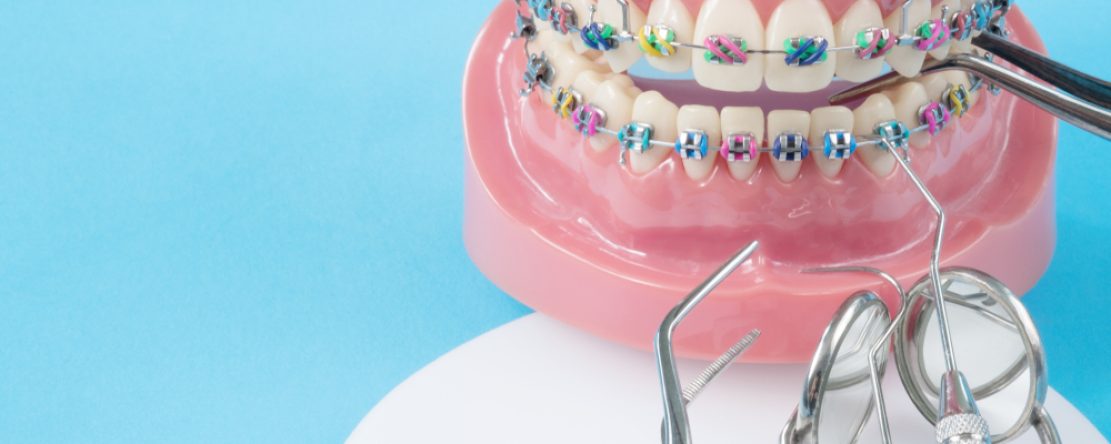Braces Treatment: Types, How It Works, Cost, & Benefits
Teeth Braces: Braces are effective in addressing various dental concerns such as misaligned, spaced, rotated, or crowded teeth. Options include traditional metal braces, ceramic braces, and clear aligners like Invisalign®. Enhancing the health, function, and aesthetics of your smile, braces offer a versatile solution for comprehensive dental improvement.
What are braces?
Dental braces align your teeth and address a variety of orthodontic issues, such as:
Crooked teeth
Crooked teeth refer to misaligned or irregularly positioned teeth that deviate from the normal alignment or straight pattern within the dental arch. This condition can manifest as teeth that are rotated, crowded, or tilted, leading to an uneven appearance in the smile. Crooked teeth can result from factors such as genetics, inadequate jaw space, early loss of primary teeth, or oral habits. Orthodontic treatments, like braces or clear aligners, are often employed to correct the alignment of crooked teeth for both functional and aesthetic purposes.
Crowded teeth
Crowded teeth occur when there is insufficient space in the dental arch to accommodate all the teeth properly. This can lead to teeth being tightly packed, overlapping, or twisted within the available space. Crowding can result from a variety of factors, including genetics, insufficient jaw size, or early loss of primary teeth. Crowded teeth may pose challenges for maintaining proper oral hygiene and can contribute to issues such as tooth decay or gum disease. Orthodontic interventions, like braces or clear aligners, are commonly used to address crowded teeth by gradually repositioning them for improved alignment and function.
Gapped teeth
Gapped teeth, also known as diastema, refer to the presence of noticeable spaces or gaps between two or more teeth within the dental arch. These spaces can occur anywhere in the mouth but are often seen between the upper front teeth. Gapped teeth can result from various factors, including differences in tooth size, missing teeth, or discrepancies in jaw size. While some people embrace the unique aesthetics of gapped teeth, others may seek orthodontic treatments, such as braces or clear aligners, to close the gaps for both cosmetic and functional reasons.
Malocclusion
(Issues with the way your teeth fit together). Malocclusion is a dental term that refers to the misalignment or incorrect positioning of the teeth when the jaws are closed. It essentially means that the upper and lower teeth do not fit together properly, leading to issues with the bite. Malocclusion can manifest in various forms, such as overbite, underbite, crossbite, or open bite, and it can result from factors like genetics, thumb-sucking habits, early loss of teeth, or jaw misalignment. Orthodontic treatments are often used to correct malocclusion, improving both the functional and aesthetic aspects of the bite and smile.
Braces are not exclusive to children and teens; they are also prevalent among adults, constituting around 20% of orthodontic patients in the United States. While orthodontists commonly administer braces, some general dentists also provide this service.
“A smile is the prettiest thing you can wear, and good dental care ensures it stays that way.” – Dr. Carmen

How braces work?
Braces employ gentle, consistent pressure to gradually move your teeth into their correct positions. The specific mechanism varies based on the type of braces you opt for.
What are the types of braces?
Various types of braces are available, and the most suitable option for you is determined by factors such as the nature of your dental issue, the extent of the condition, and your individual preferences.
Metal braces (Conventional) cost from RM5’000-RM6’500
When considering braces, the image that often comes to mind is traditional metal braces. Constructed from stainless steel bands, brackets, and wires, these braces delicately reposition your teeth over time.
Your dentist or orthodontist will affix a bracket to each tooth, securing a slender, flexible archwire over the brackets. Small elastic bands, known as ligatures, ensure the wire stays securely in position.
While metal braces are visible when you smile, you have options to make them less noticeable. You can select clear or tooth-colored ligatures for a subtler appearance, or you can opt for brightly colored ligatures if you’re in a more festive mood.
Ceramic braces (Transparent) cost from RM8'500-RM9’500
Ceramic braces, also known as clear braces, function similarly to metal braces. The notable distinction lies in the tooth-colored brackets, wires, and ligatures, seamlessly blending with your smile. While ceramic braces are still visible, they are less conspicuous. However, it’s essential to note that they are more delicate than metal braces, making them more susceptible to breakage.
Self-ligating braces cost from RM6’500-RM7’500
Self-ligating braces closely resemble traditional metal braces, with the primary distinction being the absence of ligatures (small elastic bands). Instead, self-ligating braces employ an integrated system to secure the archwire in position.
Damon - Self-ligating braces cost from RM9’000-RM10’000
Damon braces are a type of self-ligating orthodontic system. In self-ligating braces, the brackets have a built-in mechanism to hold the archwire without the need for traditional elastic ligatures. The Damon System, in particular, utilizes this self-ligating technology.
Damon braces aim to reduce friction and pressure during tooth movement, potentially leading to a more comfortable and efficient orthodontic experience. The absence of elastic ligatures also simplifies the adjustment process. The Damon System is available in both metal and clear brackets, catering to individuals seeking a discreet or traditional appearance during orthodontic treatment.
Clear aligners braces cost from RM7’000-RM9’000
Referred to as “invisible braces,” clear aligners offer an alternative to traditional braces. Instead of utilizing brackets and wires, these aligners employ a series of custom-made trays to gradually align your teeth. Prominent brands include Invisalign® and ClearCorrect®.
In these systems, each set of aligner trays is worn for approximately two weeks before transitioning to the next set in the series. Unlike metal braces, clear aligners are removable, but they should be worn for at least 22 hours daily. Removal is permitted for eating, drinking, and oral hygiene activities.
Invisalign - Clear aligners braces cost from RM16’000-RM26’000
Invisalign is a brand of clear aligners, which are a type of orthodontic treatment used to straighten teeth. Unlike traditional braces that use brackets and wires, Invisalign consists of a series of custom-made, transparent plastic trays or aligners. These aligners are virtually invisible when worn, hence the name “Invisalign.”
The Invisalign treatment process typically involves wearing a set of aligners for about two weeks before progressing to the next set. Each aligner is slightly adjusted to encourage gradual teeth movement. Invisalign is known for its discreet appearance and flexibility, as the aligners can be removed for eating, drinking, and oral hygiene, making them a popular choice for those seeking a more comfortable and inconspicuous orthodontic solution.
What is the best age for braces? Orthodontic treatment is suitable for all ages. However, the optimal time for braces typically falls between 9 and 14 years old when jaws and facial bones are more flexible due to ongoing development. While adult braces are equally effective, achieving the desired results may take a bit longer.

How long does it take for braces to work?
The duration of braces treatment varies for each individual. On average, it takes about two years to complete, with the timeframe influenced by the severity of misalignment. Some individuals may achieve results in less than 12 months, while others may require up to three years.
Risks | Benefits
What are the benefits of dental braces?
While the primary benefit of braces is achieving a straighter and more attractive smile, they also offer additional advantages such as:
- Facilitating easier teeth cleaning.
- Aiding in the prevention of cavities and gum disease.
- Addressing temporomandibular joint (TMJ) disorders.
- Restoring proper functions, including chewing and speaking.
In summary, braces contribute to enhancing the health, functionality, and appearance of your smile.
_____________
What are the normal side effects of braces?
Braces can lead to mild, anticipated side effects, such as:
- Temporary discomfort, typically on the first day and after brace adjustments.
- Irritation on the tongue, lips, or inner cheeks.
- Jaw discomfort.
- Difficulty eating, especially after adjustments.
Most of these side effects can be alleviated with over-the-counter pain relievers. Additionally, dental wax designed for braces, available at local pharmacies, can be applied to ease irritation inside your mouth. Just place a small amount of wax over any brackets or wires causing rough sensations.
About Us
Let our dedicated dentist at PrimeCare Dental Clinic inspire you with personalized care and a genuine commitment to putting a bright smile on your face. Experience the warmth and expertise that make our dental practice truly special.
Recent Post
Newsletter
Other Categories:
Post Tags: